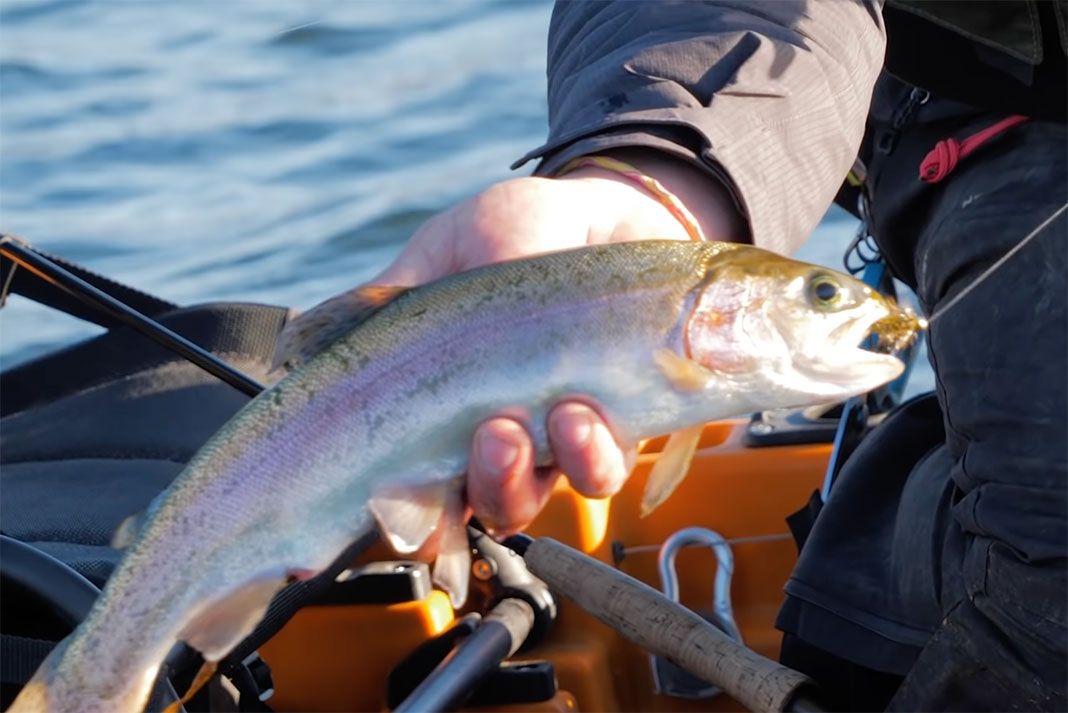Products You May Like
It’s not always easy, but kayak fishing in late fall and winter is still great for savvy and well-equipped anglers like Jordan Knigge from Addicted Fishing. He takes viewers along on a trip to Rocky Ridge Ranch in central Oregon, featuring a picturesque cabin and access to three fly-only lakes “that are full of monster rainbow trout.” Will the fishing or the wind blow him away?
Getting Into Fall and Winter Kayak Fly Fishing
The first step is always getting to the launch, and Knigge has a sweet setup from Yakima that’s perfect for kayak fly fishing. One standout feature is his DoubleHaul fly rod carrier, which “allows you to safely transport your fly rods that you normally have to break all the way down and put in small tubes.”

On the lake, Knigge uses the Minn Kota motor’s true north setting and sets the speed to counter the gusty wind, staying locked in spot while he casts his fly. He starts off with an olive woolly bugger, which “seems to be a good color in the fall. It kind of matches the water color, matches the sky a bit.”
Finding Your Depth
Knigge explains that the lake’s temperature flip is the most important factor in fall trout fishing. “So the warm water is going to the bottom and the cold water is staying at the top,” he says, “as you start to roll over into the wintertime.”
To see a rainbow, you need to figure out the level they are feeding at. Then sink your fly to that depth using split shot, sink tips or its own weight. Knigge’s tungsten-headed setup sinks at 2–3 feet per second, but he finds that this day’s bite is best in shallow water where he can see bottom.
Fancy a Visit to Fly-only Lakes?
If you’re new to fly fishing from a kayak, Knigge has a great tip to help dabble your toes: you can catch fish on fly using a spinning reel with bobber in fly-only lakes. The key, he says, is “to use flies and trim the barbs as well, so that you’re not harming any of these fish that you’re going to be releasing.”
